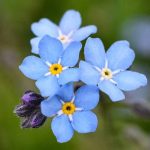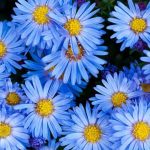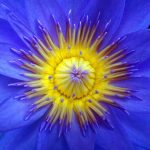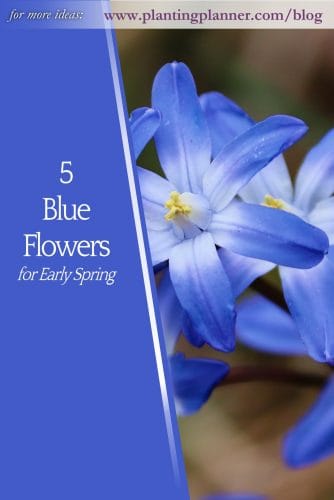from The Weatherstaff PlantingPlanner – intelligent garden design software
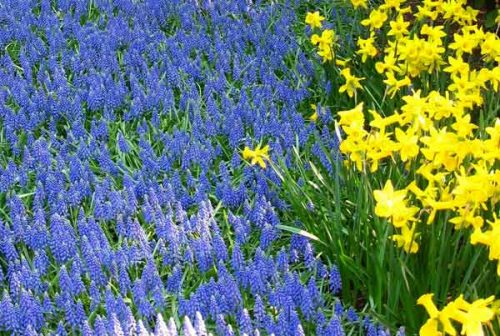
Yellow is the colour that brings optimism into early spring gardens. It’s the gardener’s cheer-upper after months of slate grey and mud-brown. But yellow is not the only colour for early spring!
In my last blog post, I looked at the yellow flowers that bloom in late winter / early spring and bring a ray of sunshine to drab winter gardens. But, even as I was writing it, I noticed that Yellow often comes hand-in-hand with its partner in crime, Blue. Daffodils look enchanting with a skirt of muscari. The watery sunlight colour of native primroses is enhanced by bright blue scillas.
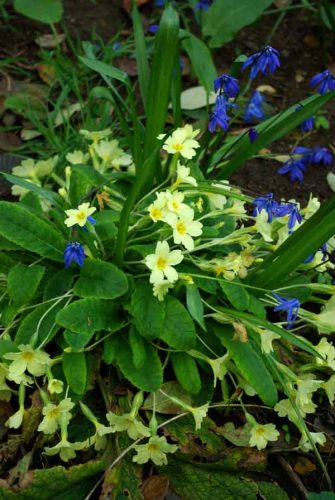
Blue is the colour of the sea and sky. It is the colour of peace. It calms and refreshes.
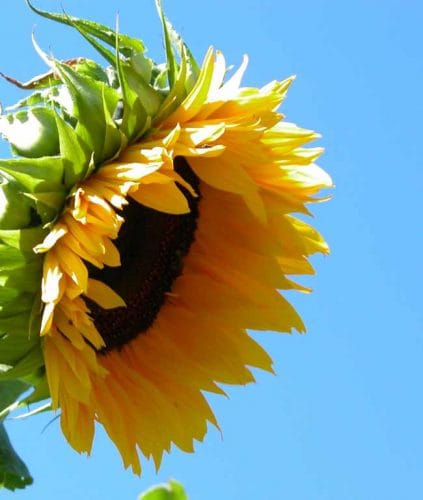
What is it about yellow and blue together that raises the spirits so beautifully?
All those blue flowers with little yellow centres are like miniature suns set in a sweep of blue sky.
If you add to the yellow/ blue combination, a dash of spring-fresh green, you’re on to a winner.
Green sits between yellow and blue on the colour wheel. It is the harmonious, balancing link between warm and cool colours. Green combines the relaxing attributes of blue with the energising influence of yellow. It also represents new life. New shoots springing up in garden beds and hedges.
So, to complement those yellow spring flowers, here are 5 of the best blue flowers to bring a sprinkle of serenity to your garden borders.
Scilla siberica
Scilla siberica (Siberian squill) is a dainty perennial, pushing up each year in early and mid-spring to 20cm in height.
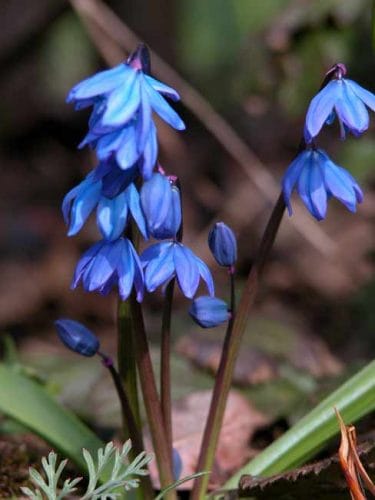
Little, bright blue flowers nod above narrow, mid-green leaves. Plant the bulbs in autumn, then leave them undisturbed to naturalise. They like both sun and partial shade.
Muscari armeniacum
Muscari armeniacum or the Grape Hyacinth is a vigorous, little bulbous perennial, about 20cm tall. Clusters of tubular, deep blue flowers, with white rims, appear in the spring, though the linear, mid-green leaves emerge in autumn.
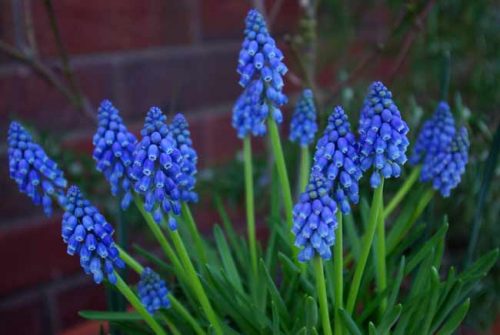
Plant bulbs in autumn in moist, well-drained soil in full sun. Allow the plant to set seed for an even more impressive show the following year.
You could also try Muscari latifolium, a quirky two-tone grape hyacinth, with blue-black flowers on the bottom of the flower spike and a mop of bright blue flowers on the top.
Scilla luciliae
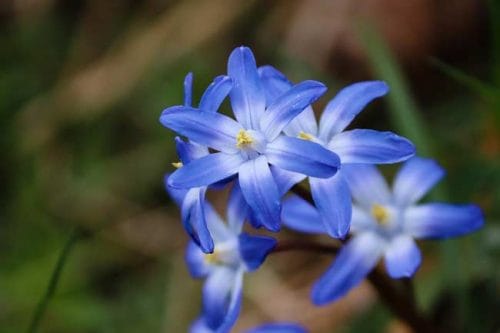
Scilla luciliae (previously known as Chionodoxa) carries sprays of starry blue flowers, with white centres. Its common name is Glory-of-the-snow, a reference to its early flowering period in late winter and early spring.
Each bulb produces a pair of linear, mid-green leaves and grows to 15cm in height. Ideally, plant in drifts in full sun in well-drained soil, where they will set seed and naturalise.
Iris reticulata
This is an early spring flowering iris, growing from a bulb and flowering in late winter and early spring. After a period of summer dormancy, linear, green leaves emerge from the soil, reaching up to 10cm long at flowering time but elongating after flowering to about 30cm. 1 or sometimes 2 flowers are carried on each stem.
The beautiful iris flowers are very distinctive. The 3 outer petal-like sepals are called the falls – they often droop or arch downwards. The 3 inner petals, usually upright, are known as the standards.
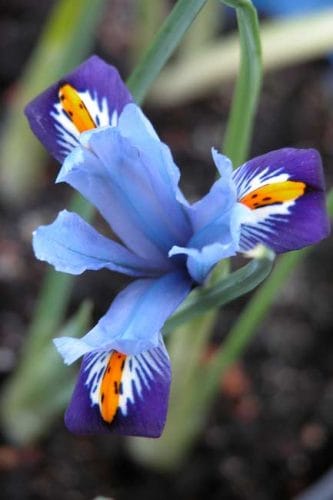
Iris reticulata ‘Cantab’ has pale blue standards. The falls are deep blue with pretty yellow-orange and white markings.
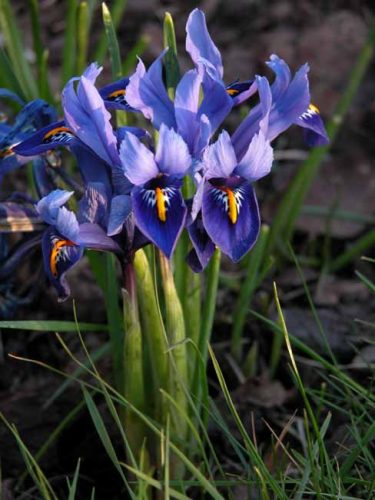
Iris ‘Harmony’ has soft purple-blue flowers, with pretty yellow and white markings. Iris ‘Clairette’ has pale blue standards. The falls are deep violet with white markings.
Plant bulbs in late summer. Grow in full sun and well-drained soil. Bulbous irises need moisture from autumn to spring and hot summers to perform well.
Anemone blanda
Anemone blanda, the winter windflower, is a cheerful, little tuberous perennial. Pretty, daisy-like flowers in violet-blue appear in spring. ‘Blue Star’ has pale blue flowers. The flowers of ‘Atrocaerulea’ are deep blue.
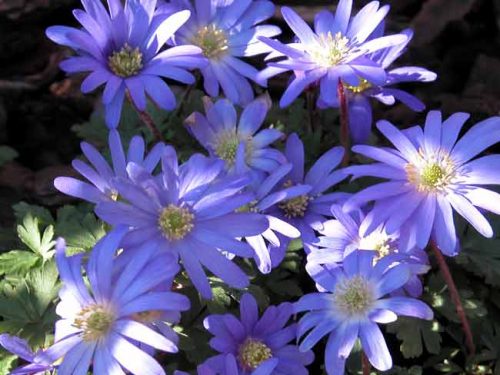
Anemone blanda likes moist or well-drained soil in sun or part shade. Growing to 15cm in height, it will quickly spread to form a large clump.
Try some blue/ yellow combinations in your garden containers and borders for an early taste of summer skies!
Pin for later
For more gardening ideas, click here to follow the Weatherstaff PlantingPlanner on Pinterest.


